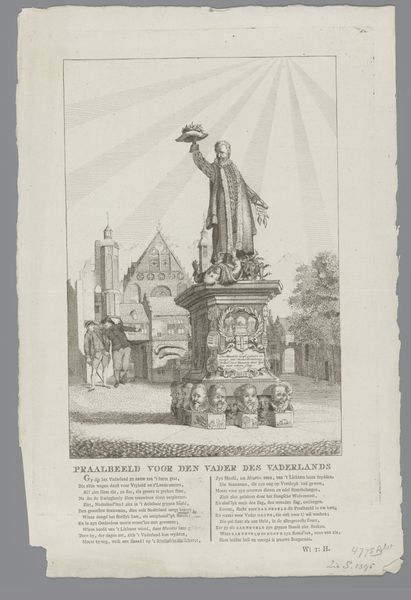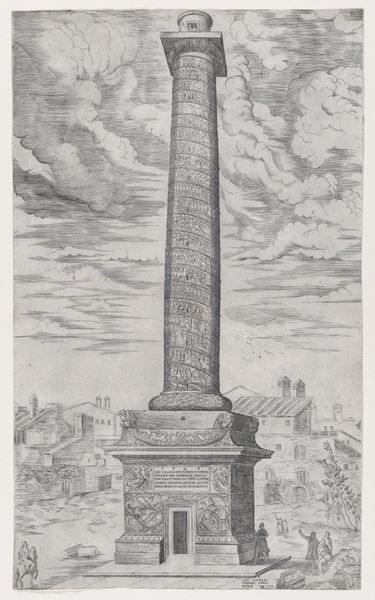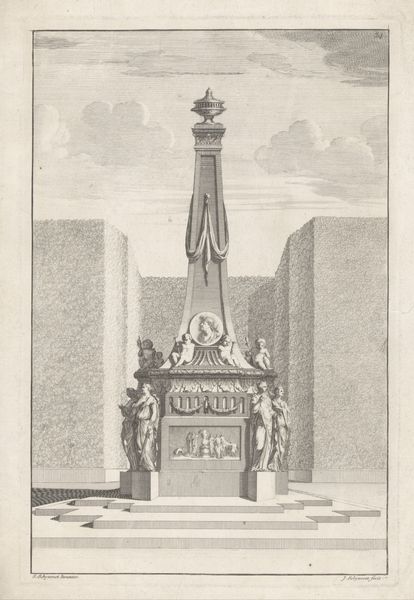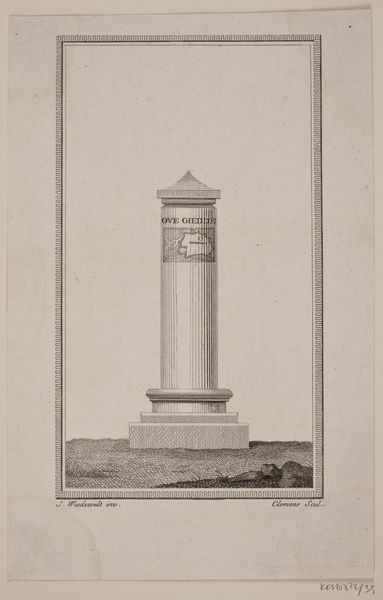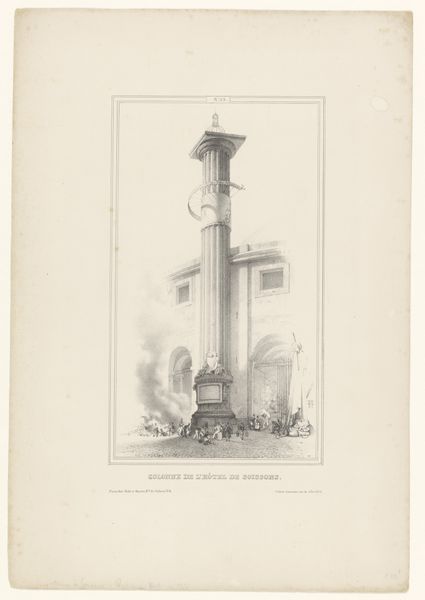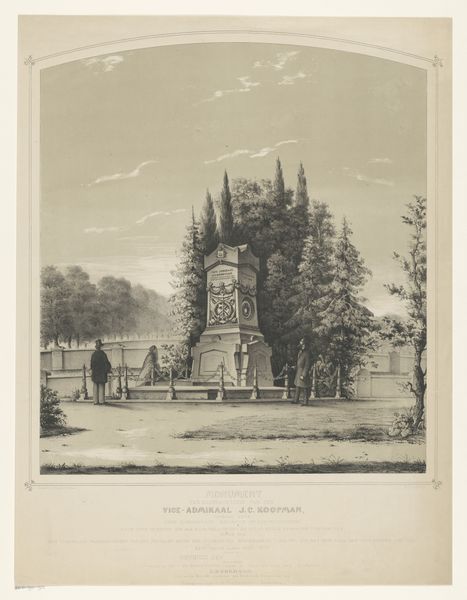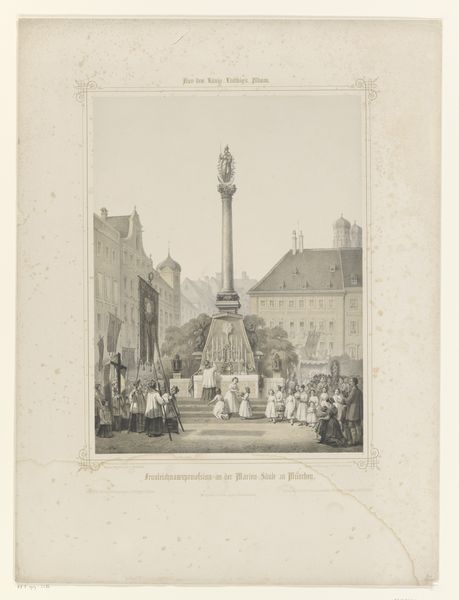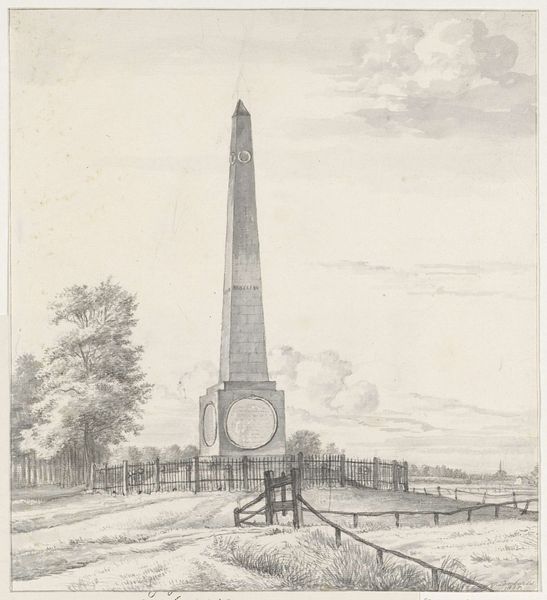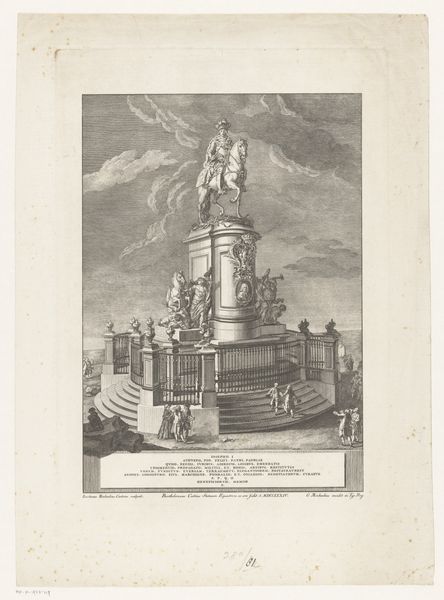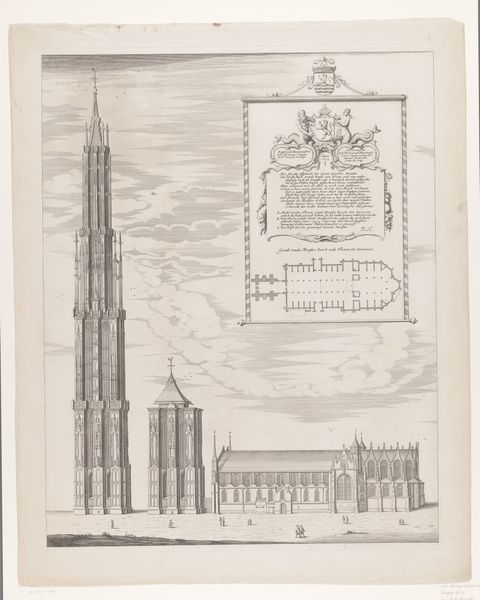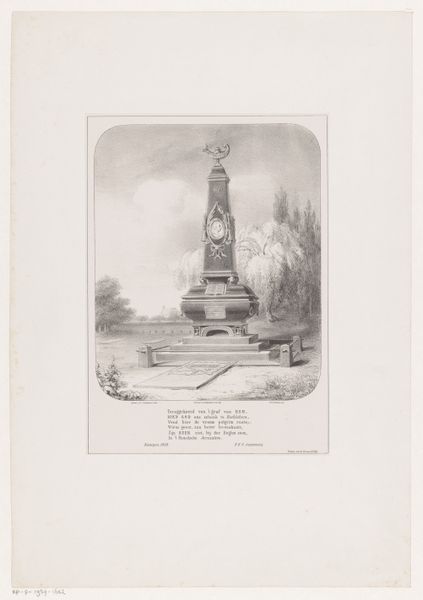
drawing, lithograph, print, engraving
#
pencil drawn
#
drawing
#
16_19th-century
#
lithograph
# print
#
old engraving style
#
landscape
#
cityscape
#
engraving
Dimensions: height 524 mm, width 340 mm
Copyright: Rijks Museum: Open Domain
Editor: Here we have "Mariazuil in Keulen, 1857," by Weber & Deckers, a lithograph and engraving print depicting a cityscape. The detail is striking, almost photographic. What strikes me is how the piece highlights the religious monument as the central element against the backdrop of the city. What do you find most compelling about this work? Curator: Well, given the period and materials used, it's interesting to consider this work in terms of production and consumption. Lithography allowed for relatively mass production, making this image accessible to a wider audience. This wasn't a unique, precious object, but something circulated and consumed. We can ask, what was the social function of depicting this particular monument in this way, making it a readily available commodity? Editor: That's fascinating, I hadn't considered its distribution! Was there a specific demand for cityscape prints like these back then? Curator: Absolutely. Think about the rise of tourism and urban development during the 19th century. Prints like this provided a means of documenting, celebrating, and perhaps even marketing urban spaces. They facilitated a visual engagement with the city, offering a tangible souvenir or a vicarious experience of Cologne. Look closely at the level of detail reproduced with engraving techniques—does this focus on precision reflect pride in industrial advancements that enabled efficient replications and expanded consumerism? Editor: That's a new way to think about prints – not just as art, but as documentation and…advertising! Curator: Exactly! And notice how the artists, Weber & Deckers, become part of this chain of production. They are laborers contributing to the circulation of images, reflecting how art itself becomes industrialized. It changes how we view "artistic" creation when it's part of a larger process. Editor: I see. This changes the narrative from simply appreciating the artistic skill to understanding the broader economic and social implications. Curator: Precisely! It’s not only about aesthetics but also about understanding the art market, material processes, and societal contexts within which those materials circulated. Editor: Thank you, that's given me a much deeper appreciation for what this image represents.
Comments
No comments
Be the first to comment and join the conversation on the ultimate creative platform.
